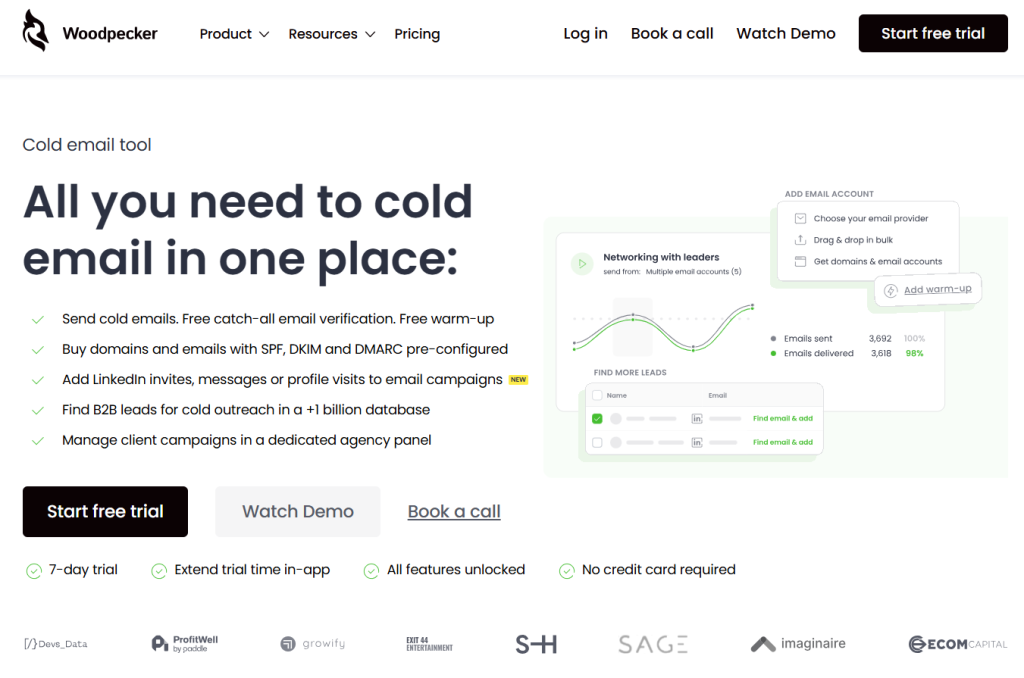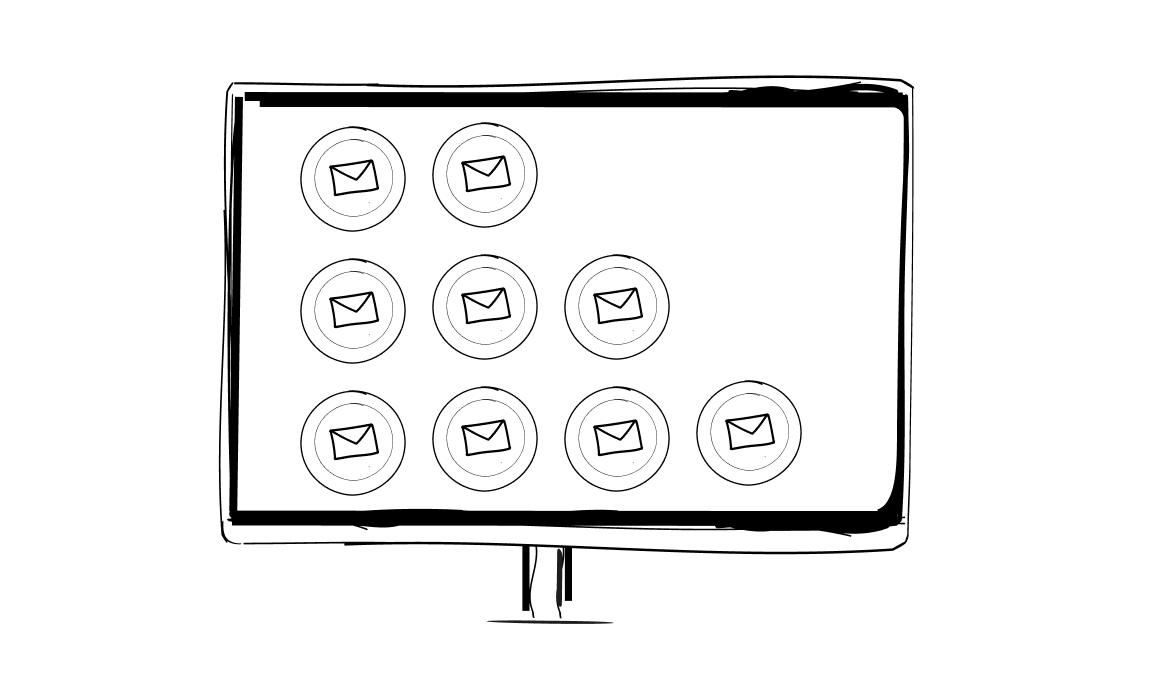If you’re feeling like your sales process is held together with duct tape, you couldn’t have picked a better article to read.
You probably know the feeling too well. That little anxiety spike after hitting “Send.” The quiet dread of… nothing. No opens or replies. No idea what went wrong.
Meanwhile, your pipeline’s running dry, your reps are juggling spreadsheets and browser tabs, and every follow-up feels like a guess.
Here’s the truth: it’s not your messaging or your team. It’s your system.
In 2025, sales success comes from doing it using a sales cadence tool that quietly runs the show behind the scenes.
In this guide, we show you exactly how to find the right one.
What is a sales cadence tool?
A sales cadence tool helps you reach out to leads in a structured and repeatable way. It combines sales emails, cold calls, LinkedIn messages, and other steps into one organized flow.
This tool lets your sales team use multi-channel outreach to connect with more leads and move faster through the sales activity process.
You can use customizable templates and automated follow-ups to reduce manual work. It’s also easier to track leads and manage follow-up tasks. Some tools also include AI capabilities or AI-driven insights to help suggest next steps based on lead behavior.
Many tools include advanced features like landing pages and email marketing tools, so you don’t need multiple tools. Instead, you get one platform with all the key features to help your team close deals faster.
Who needs outreach automation tools?
Generally speaking, any sales team that wants to grow faster and handle more leads should use outreach automation tools. These solutions can be especially useful for sales managers and lead generation teams.
If you rely on inbound leads or do lots of outbound messaging, outreach automation helps you stay on track. It helps avoid missed follow-ups and improves response rates across all channels.
Companies using advanced analytics and detailed analytics can also connect this data to lead management systems.
This makes it easier to see what’s working and where to improve. From scheduling cold calls to sending sales emails, these tools are built to support modern sales teams with fast and clear communication.
How to find the best sales cadence tool in 2025? Checklist
To help you find the best solution for your needs, we’ve developed this checklist.
Let’s walk through each point from a practical view.
This is for anyone trying to reduce manual data entry and guide sales reps toward better results:
#1 Integration & workflow fit
The first thing to look for is CRM integration. If the sales cadence platform integrates seamlessly with your CRM, it eliminates the need to copy and paste contact details or notes manually. It also means your sales reps can move through the sales cycle without switching tools.
Check if the platform fits with other parts of your sales process. If your marketing teams use a separate tool for email campaigns, or if your team uses LinkedIn Sales Navigator, you’ll want to connect those, too.
A good fit means less jumping between tabs and more time focused on potential customers.
#2 Cadence automation & smart sequencing
A sales cadence helps you organize your touchpoints. The best tools use sales automation to build repeatable steps. For example:
- Send a personalized email on day one,
- Follow up with a phone call on day three,
- and then a LinkedIn message on day five.
Look for support for multiple channels. If your sales reps only send emails, you’ll miss people who respond better to sales calls or LinkedIn messages.
You should also check if the tool supports automatic triggers, like sending a follow-up if someone clicks but doesn’t reply.
#3 Deliverability & personalization
Personalized cold emails still work, but only if they land in the inbox. Your sales cadence platform should help with email deliverability. That means checking domains and warming up your address. Without this, your open rates will drop fast.
It should also make it easy to personalize every message. You want more than [First Name] or [Company Name] fields.
Look for tools that support dynamic content, like job titles or recent LinkedIn activity. This helps sales communication sound real and not like a template.
#4 AI‑powered intelligence & prediction
Some sales cadence platforms now use AI to adjust your sequences. They suggest sending at better times, and even write personalized subject lines. This helps sales teams reach their target audience more efficiently.
AI features can also identify which messages generate more replies and which steps hinder the sales funnel. This kind of input helps you shorten the sales cycle and move leads through the sales pipeline with less guesswork.
#5 Collaboration & scaling
A sales cadence tool should support the full sales team, not just one rep. Shared cadences help everyone stay aligned. If one rep builds a winning sequence, others should be able to use it too.
You’ll also want lead scoring or tagging. Some platforms use behavior scoring (like opens and clicks) to highlight potential customers with high interest. This helps sales reps know who to call first and keeps sales communication focused on the right people.
#6 Analytics, reporting & optimization
Sales engagement works best when you can track the results. You’ll need detailed reports that show open rates, reply rates, call outcomes, meetings booked, and more. The more detailed the analytics, the better your sales performance gets over time.
Look for real-time dashboards that break down results by channel. For example, are your phone calls better than LinkedIn messages? Which rep closes more deals? This helps revenue teams make smart adjustments that lead to more revenue.
Cold outreach on LinkedIn – tips & examples
#7 User experience & cost considerations
Finally, check if the platform is easy to use.
- Can sales reps build cadences quickly?
- Is the dashboard clear?
A simple layout can help teams adopt the tool faster.
Also, be sure to compare pricing plans carefully. Some tools charge by the number of contacts, others by users. You might see custom pricing for teams with large volumes or special support needs.
Don’t forget to ask about support and onboarding, or any extra costs for integrations. You can actually check most of these details on platforms like G2 and Capterra.
The best sales cadence software to pick in 2025
Now, what if we told you that you don’t have to look for the best sales cadence tool?
Let us save you hours of research and give a solid recommendation.
Woodpecker is one of the top picks for sales teams in 2025 that want to automate cold email outreach and manage multi-channel outreach from one platform. It’s built for deliverability and ease of use.

Why Woodpecker stands out as a sales cadence tool
- Full sales cadence control – build personalized sequences with customizable templates, condition-based triggers, and automated follow ups that include email and LinkedIn
- Built-in deliverability tools – includes free warm-up, free email verification using Bouncer, adaptive sending, and deliverability monitoring to keep your emails out of spam
- AI-driven outreach flow – Woodpecker uses AI capabilities like send-time prediction and advanced analytics to improve response rates and optimize sales activity
- Easy integration – connects to tools like HubSpot, Pipedrive, Google Sheets, and Zapier
- Built for lead generation – use the Lead Finder to search a 1B+ database, then add verified contacts into email marketing campaigns without switching between multiple tools
Pricing
Starts at $20/month for up to 500 contacts, with no extra cost for adding team members. Includes a 7-day free trial with full feature access (no credit card needed).
If you’re a senior account executive or run a team focused on lead management and high-performing outbound messaging, Woodpecker is the sales engagement platform that helps your team close deals faster.
Don’t wait, try it for free now.
Over to you
By now, you know that the right sales cadence tool can fix the mess you’ve been tolerating.
So don’t settle for duct tape when you could have one platform that handles outreach in one place.
You’ve seen what to look for. Now it’s your move. Pick the tool that keeps your pipeline humming and your team in control.
Start with Woodpecker, or use the checklist to find your perfect fit. Either way, stop guessing and start closing.

